Reverse Dieting: How To Do It Right According to a Strength Coach

The topic of reverse dieting can at times be misconstrued. It’s a subject that’s often glorified on social platforms and commonly misunderstood. In theory, reverse diets sound great and come with a bunch of benefits, but let’s break down what reverse diets actually are.
It’s important to realize that with reverse diets, context is always needed and your approach will and should be slightly different than your peers. In this article, I’ll discuss the characteristics of reverse diets, how they actually work, and a better means to approach them if you want to use them to get out of dieting phases.
What Are Reverse Diets?
Reverse diets are a means of strategically and slowly increasing daily calories too, in theory, boost one’s metabolism after being in a prolonged diet phase. Basically, they’re a tool to help one increase daily intake while also trying to mitigate overall fat gain in the process, since the metabolism has been adjusted to one’s diet phase for a period of time.
Reverse diets make multiple promises that are not necessarily true, nor do these promises work in ways that many believe they do. Some of the things that reverse diets promise include:
- Fixing metabolisms
- Lowering body fat while allowing you to eat more
- Increase leanness while eating more
While some of this may be true to a degree, there’s a lot of lacking context, and it’s not as simple or clear-cut as many suggest reverse diets to be.
Depending on the deficit you use in your diet, when you gradually start to increase calories in a "reverse diet" fashion, you'll continue to lose weight due to still being in a deficit. For example, if you finish a diet at a daily 600-calorie deficit, then start to add calories back in very gradually, then you'll continue to lose weight and see results.
This is not because a "reverse diet" is magic or fixing a metabolism, but because you're still in a caloric deficit. In addition, reports of "faster" progress with the use of reverse diets are often caused by an increase in energy expenditure and water weight loss.
Over prolonged diet phases, our body can hold more water due to an increase in stress and cortisol. When we begin to add calories back in, generally, we’ll see stress and cortisol start to naturally decrease which can then limit how much water we’re holding. In this scenario, the weight loss is not body fat-related, but simply due to water retention.
Reverse Dieting Benefits
There are multiple benefits that come along with reverse dieting, however, especially when followed with strategy and patience.
1. Easier to Gauge Progress
When in a prolonged dieting phase, our metabolisms will often slow to adjust to our daily intake. This means that if we sharply increase calories all of a sudden, we can quickly gain the weight back due to eating more on top of a slightly slowed-down metabolism.
Reverse diets are great tools for slowly tracking progress back to one’s maintenance without adding weight quickly, which can be harder to gauge and track.
2. Prolong a Deficit While Also Improving Performance
We discussed this above, but when increasing calories slowly after being in a prolonged deficit, we’ll generally see our performance receive a boost due to an increase in calories while also losing a bit more weight.
This is because we’re still eating in a deficit, however, we now have more calories to utilize for performance than before. In a transition phase, this can be a nice tool for motivation and adherence since the thought of regaining weight can cause some hesitancy and reactivity in dieters.
3. Re-Establish One’s Maintenance With More Accuracy
By increasing slowly, we can build a better idea of how much our intake should be to maintain certain body weights and body fats. This can be useful for lifters and athletes that are trying to slowly and strategically establish a new maintenance or set point.
Reverse Dieting in Action
If a dieter increases calories by 50-100 every week from 600, they’ll still be in a deficit for multiple weeks despite these marginal increases. When reverse dieters see that they're still making progress despite eating a bit more, it's not because of some magic biohacking product of reverse dieting, but because they're still in a small caloric deficit.
Another important consideration of the above is that it can be very tedious and difficult to be that granular with one’s tracking. For example, a lot of dieters can find it difficult to accurately gauge only adding 50-100 calories every week. This is due to the ever-changing nature of life, which is normal and healthy.
After weeks of slowly adding calories back in, everyone will eventually hit a point in which they’ll reach their maintenance, causing weight loss to stop. Once this point is reached, it’s a really good idea to remain cognizant of how much is being consumed as this will function as your new maintenance for some time.
A Better Approach to Reverse Dieting
Instead of trying to track a weekly increase of 50-100 calories a week, there are other ways to approach the topic of “reverse dieting” and still reap the performance benefits that come with this strategy without stressing details that may be out of your control.
Setting Up Your Intake
Once you’ve hit a point in which you’re ready to start adding calories back in, you’ll want to establish a “new” maintenance. This maintenance is designed to account for the prolonged dieting phase without rushing to add calories back in.
Step 1: Recalculate Your "New" Maintenance
Post-diet phase, use the metrics that you currently have for your body to recalculate your maintenance caloric intake. It’s a good idea to use the same method to calculate the “new” maintenance that you did to establish your diet phase. Basically, opt for the same calculator or means that you used before to establish your dieting phase steps. Once you have this “new” maintenance number that accounts for the deficit you've been in, subtract 7% off of it.
Let’s say you recalculated your new maintenance and got 2,500 calories, then you'd take off 7% of that which would equal 175 calories (2,500 x .07). Your new maintenance to transition toward is 2,225 daily calories.
The 7% is used to account for your body’s newer body fat and body weight metrics and to help mitigate the variance that one can experience over a prolonged period of dieting. Remember, when in this phase, it can be useful to consume adequate amounts of quality protein to assist with muscle growth and recovery. High-quality animal protein, whey protein powder, casein protein powder, and plant-based protein powder are all good options for boosting protein intake.
Step 2: Eat At This "New" Maintenance and Be Patient
Once you've established this "new" maintenance, instead of adding in calories slowly, you’ll simply eat this amount for a set amount of time and use it as your primary daily caloric target.
Timelines can vary with this step, so it’s a good idea to stay at this “new” maintenance goal and be patient for a few weeks to gauge progress. Focus on performance and how your body responds to this total. As you adjust, remember to stay hydrated when training and to consume adequate vitamins and minerals to support energy levels. A large reusable water bottle and a high-quality multivitamin can help you with these goals.
During this time, you might gain weight and that’s normal. This weight gain is likely glycogen being replenished due to additional carbohydrates in the form of water weight, which will be good for performance. This gain should subside and level off after a few days, so keep this in mind to mitigate any reactive decisions.
When working through this phase, it can also be helpful to try and focus on performance output and use that to assist with training motivation. If you consume things like pre-workout formulas or caffeine to give your training a boost, try to separate and be objective with their impact and your overall performance.
This method is usually a good bet for a majority of lifters and athletes because it’s easier to follow and it will lead one to the same goals that come along with traditional reverse dieting without rushing back to one’s normal maintenance.
DISCLAIMER:This Wellness Hub does not intend to provide diagnosis...









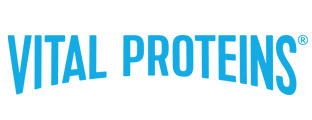






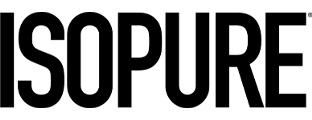
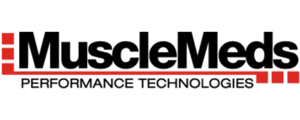
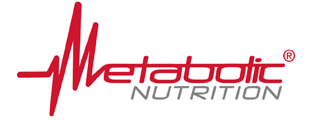












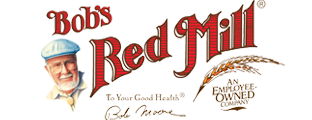























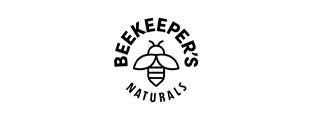
























 Table of Contents
Table of Contents


